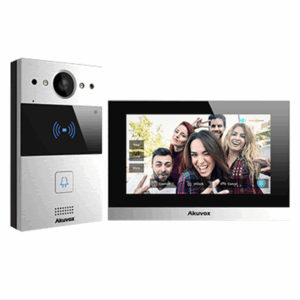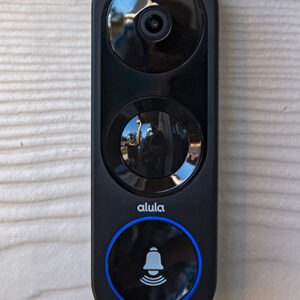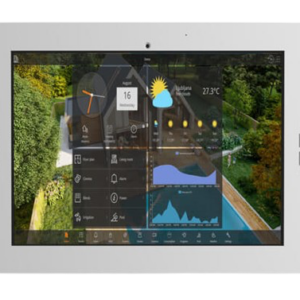Intercom systems have become an integral part of modern homes and businesses, offering a range of functionalities from enhancing security to improving communication. This article delves into the various types of intercom systems, their benefits, installation processes, and how they can be leveraged to improve both residential and commercial settings.
Table of Contents
ToggleWhat is an Intercom System?
An intercom, short for intercommunication device, is a stand-alone voice communications system used within a building or a small collection of buildings. Intercoms are independent from the public telephone network and have a range of applications, from simple door entry systems to complex multi-unit systems used in larger buildings.
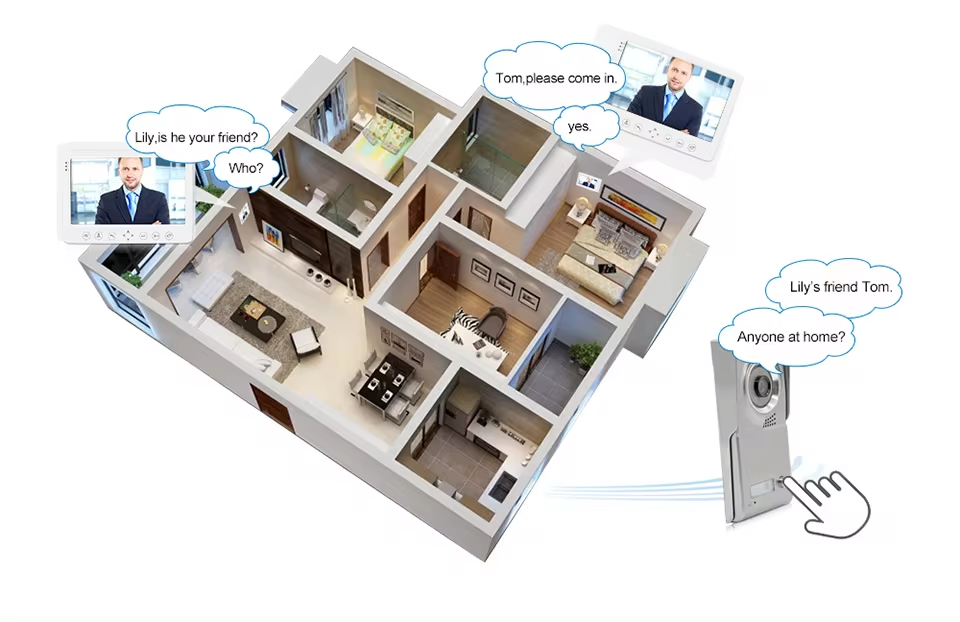
Types of Intercom Systems
Intercom systems can be broadly categorized into several types based on their technology and use-case scenarios:
- Wired Intercom Systems
- Wireless Intercom Systems
- Video Intercom Systems
- Audio Intercom Systems
- Smartphone-based Intercom Systems
Wired Intercom Systems
Wired intercom systems use physical wiring to connect different intercom units. These systems are known for their reliability and high-quality sound transmission, as they are less susceptible to interference than wireless systems. They are ideal for permanent installations where the intercom locations are fixed.
Advantages:
- Stable Connection: Wired systems are less likely to experience interference and connectivity issues.
- High Quality: Typically offer better audio and video quality.
- Security: More secure as they are less prone to hacking compared to wireless systems.
Disadvantages:
- Installation Complexity: Requires extensive wiring, which can be difficult and expensive to install, especially in existing structures.
- Lack of Flexibility: Hard to relocate or expand without additional wiring.
Wireless Intercom Systems
Wireless intercom systems use radio frequencies, Wi-Fi, or other wireless technologies to communicate between units. These systems are easier to install and offer flexibility in terms of placement.
Advantages:
- Easy Installation: No need for extensive wiring, making it ideal for retrofitting.
- Flexibility: Units can be easily moved and relocated as needed.
- Expandable: Simple to add more units to the system.
Disadvantages:
- Interference: Susceptible to interference from other wireless devices.
- Range Limitations: Range can be limited, particularly in large buildings or areas with thick walls.
- Security Concerns: Potentially more vulnerable to hacking or eavesdropping.
Video Intercom Systems
Video intercom systems add a layer of visual communication by incorporating cameras along with audio communication. These systems are particularly popular for enhancing security.
Advantages:
- Enhanced Security: Allows you to see the person you’re communicating with, providing an extra layer of security.
- Visitor Verification: Ideal for verifying visitors before granting access.
Disadvantages:
- Cost: Typically more expensive than audio-only systems.
- Complexity: Installation and maintenance can be more complicated.
Audio Intercom Systems
Audio intercom systems focus solely on voice communication. These are the most basic type of intercoms and are suitable for simple communication needs.
Advantages:
- Cost-Effective: Generally cheaper than video intercom systems.
- Simplicity: Easy to install and use.
Disadvantages:
- Limited Functionality: Lack of visual verification can be a drawback for security purposes.
Smartphone-based Intercom Systems
Smartphone-based intercom systems leverage mobile apps to allow communication through smartphones. These systems often integrate with other smart home devices.
Advantages:
- Convenience: Use your existing smartphone to communicate.
- Integration: Can integrate with other smart home systems for enhanced functionality.
- Remote Access: Allows communication even when you’re not at home.
Disadvantages:
- Reliability: Dependent on internet connectivity and smartphone battery life.
- Security Risks: Potential vulnerabilities in app security.
Top 10 Features To Look For in a Home Intercom System?

When selecting a home intercom system, it’s crucial to consider features that enhance security, convenience, and overall functionality. Here are the top 10 features to look for in a home intercom system:
1. Clear Two-Way Audio Communication
- High-Quality Sound: Ensure the system offers clear, two-way audio for effective communication without distortion or static.
- Hands-Free Operation: Look for intercoms that allow hands-free communication, which can be more convenient in various situations.
2. Video Monitoring and Communication
- High-Resolution Cameras: Systems with high-definition cameras provide clear images, crucial for identifying visitors and enhancing security.
- Night Vision: Cameras equipped with night vision ensure visibility and security even in low-light conditions.
3. Wireless Connectivity
- Wi-Fi Enabled: Wireless systems simplify installation and offer greater flexibility in terms of unit placement around your property.
- Range and Stability: Ensure the system has a strong signal range and stable connection to avoid interruptions.
4. Smartphone Integration
- Mobile App Access: Choose systems that can be controlled and monitored via a mobile app, allowing remote access and control.
- Push Notifications: Receive real-time alerts on your smartphone for events like doorbell rings or motion detection.
5. Smart Home Integration
- Compatibility with Smart Devices: Systems that integrate with other smart home devices, such as door locks, security cameras, and lighting, provide a cohesive smart home experience.
- Voice Assistant Support: Integration with voice assistants like Amazon Alexa, Google Assistant, or Apple HomeKit adds an extra layer of convenience.
6. Access Control Features
- Remote Door Unlocking: Look for intercom systems that can be integrated with electronic door locks to allow remote unlocking and entry management.
- Visitor Management: Features like issuing temporary access codes for guests enhance security and convenience.
7. Recording and Playback Capabilities
- Video and Audio Recording: Ensure the system can record both video and audio, either on local storage or in the cloud.
- Playback Functionality: The ability to review recorded footage is essential for security and incident verification.
8. Intercom System Expandability
- Scalability: Opt for systems that allow you to easily add additional units, ideal for expanding coverage as needed.
- Multi-Unit Communication: Ensure the system supports communication between multiple units, which is useful in larger homes or business premises.
9. Multi-Unit Communication
- Room-to-Room Calling: Facilitates communication between different rooms or units within a building.
- Group Calling: Some systems allow users to broadcast messages to multiple units simultaneously.
10. Emergency Features
- Panic Button: Some systems include a panic button that triggers an emergency alert or response.
- Emergency Broadcasts: The ability to send emergency messages or alerts to all units simultaneously can be critical during urgent situations.
11. User Management and Customization
- Multiple User Profiles: Systems that support multiple user profiles can provide customized settings for different users, enhancing user experience.
- Access Permissions: Administrators should be able to set different access levels and permissions for various users to maintain security and control.
Benefits of Intercom Systems
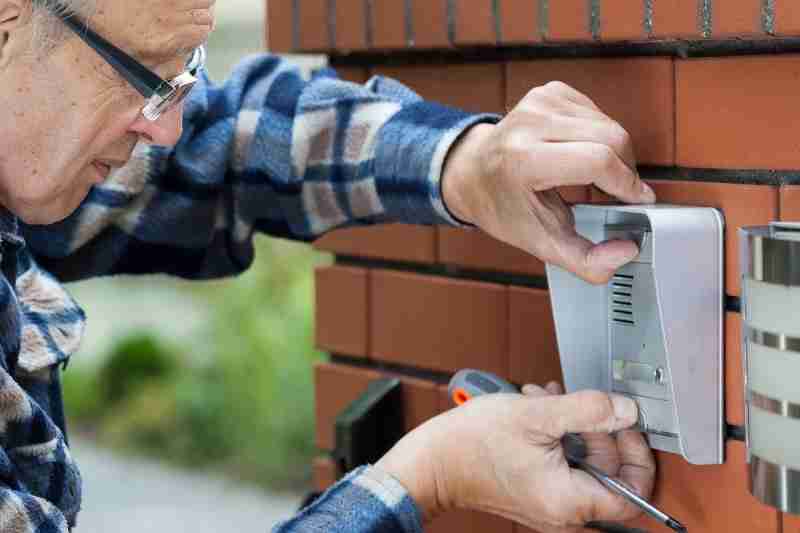
Intercom systems offer a myriad of benefits, making them valuable additions to both homes and businesses.
Enhanced Security
One of the primary benefits of intercom systems is the enhanced security they provide. Video intercoms, in particular, allow residents to see and verify visitors before granting access, reducing the risk of unauthorized entry. In commercial settings, intercoms can be integrated with access control systems to manage who enters specific areas.
Improved Communication
Intercom systems facilitate better communication within large homes or businesses. They allow instant communication between different rooms or buildings, eliminating the need for shouting or physically moving from one place to another.
Convenience
Modern intercom systems, especially those integrated with smartphones, provide unparalleled convenience. Users can answer the door, communicate with family members, or manage entry points from the comfort of their couch or even while away from home.
Increased Property Value
Installing a high-quality intercom system can increase the value of a property. Potential buyers often see advanced security and communication systems as desirable features, making a property more attractive in the real estate market.
Installation of Intercom Systems
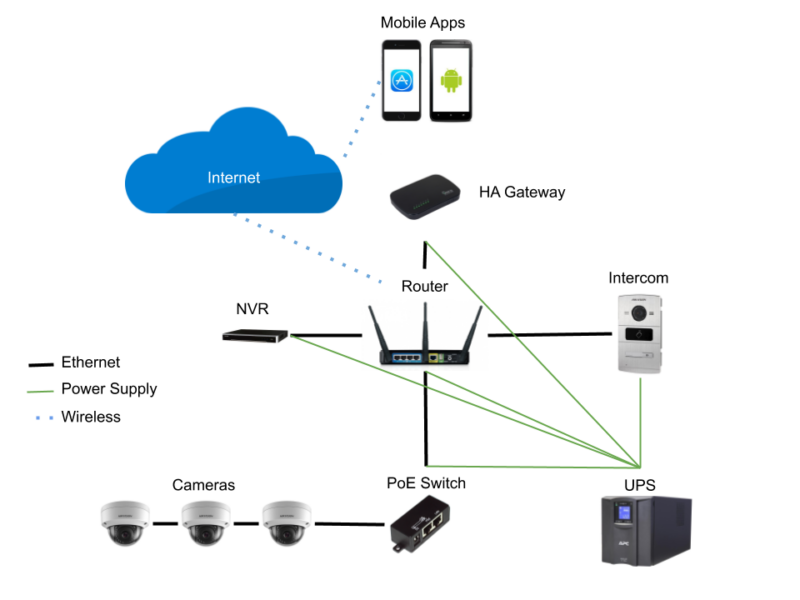
The installation process of an intercom system can vary significantly depending on the type and complexity of the system. Here are the general steps involved:
Planning and Design
The first step in installing an intercom system is planning and design. This involves determining the locations of intercom units, the type of system to be used, and any additional features required. For wired systems, this also includes planning the wiring routes.
Wiring (for Wired Systems)
For wired intercom systems, the next step is running the necessary wiring. This often involves drilling holes and running cables through walls and ceilings. It’s important to follow building codes and regulations during this process.
Mounting and Installation
Once the wiring is in place (for wired systems), the next step is mounting the intercom units. This involves physically attaching the intercoms to walls or other surfaces and connecting them to the wiring or wireless network.
Configuration and Testing
After installation, the system needs to be configured and tested. This includes setting up any necessary software, configuring settings, and testing the communication between units to ensure everything is working correctly.
Training and Maintenance
Finally, users should be trained on how to use the system, and a maintenance plan should be established. Regular maintenance can help ensure the system continues to function properly and can extend its lifespan.
Choosing the Right Intercom System
Choosing the right intercom system involves considering several factors, including your specific needs, budget, and the layout of your home or business. Here are some key considerations:
Purpose
Consider why you need an intercom system. If security is a primary concern, a video intercom system might be the best choice. For general communication, an audio intercom system might suffice.
Budget
Intercom systems can range from relatively inexpensive to quite costly, depending on their features and complexity. Set a budget and look for a system that meets your needs without exceeding it.
Installation Complexity
Consider whether you’re willing to handle a complex installation process. Wired systems, while often more reliable, require more extensive installation work. Wireless systems are easier to install but may have other limitations.
Features
Look at the features offered by different intercom systems. Some systems offer integration with smart home devices, remote access via smartphones, or advanced security features. Determine which features are important to you.
Scalability
If you plan to expand your intercom system in the future, consider a system that is easily scalable. Wireless systems are often easier to expand than wired systems.
Conclusion
Intercom systems are versatile tools that enhance security, improve communication, and add convenience to both residential and commercial settings. Whether you opt for a wired, wireless, audio, video, or smartphone-based intercom system, the right choice depends on your specific needs and circumstances. By understanding the different types of intercom systems, their benefits, and installation processes, you can make an informed decision and select the system that best fits your requirements.
With advancements in technology, intercom systems are becoming smarter and more integrated, offering even greater functionality and ease of use. As homes and businesses continue to seek ways to enhance security and streamline communication, the importance of intercom systems will only continue to grow.
-
Akuvox Video Doorbell E12S Powerful Secure Features
$222.73 (ex. GST)Please login to see trade price
Add to cart -
-
-


